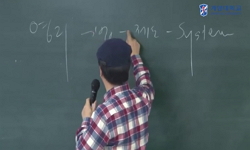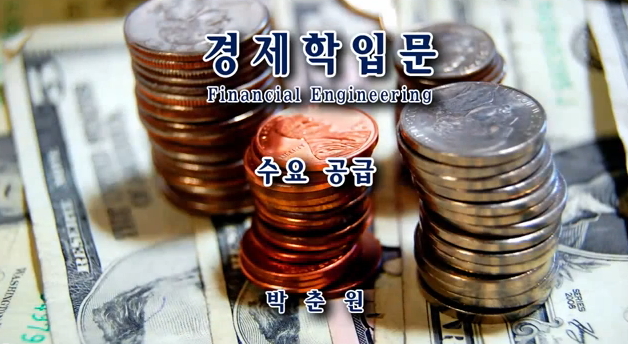본 연구에서는 2000년 1월 1일부터 2013년 12월 31일까지 한국거래소의 유가증권시장에 상장된 기업을 대상으로 제품시장에서의 독점력과 자본구조간의 관계를 실증분석 하였다. 기업의 제품시...
http://chineseinput.net/에서 pinyin(병음)방식으로 중국어를 변환할 수 있습니다.
변환된 중국어를 복사하여 사용하시면 됩니다.
- 中文 을 입력하시려면 zhongwen을 입력하시고 space를누르시면됩니다.
- 北京 을 입력하시려면 beijing을 입력하시고 space를 누르시면 됩니다.

논문 : 기업의 제품시장에서의 독점력과 자본구조간의 관계 = Relationships between Monopoly Power in Product Market and Capital Structure
한글로보기https://www.riss.kr/link?id=A101844314
- 저자
- 발행기관
- 학술지명
- 권호사항
-
발행연도
2016
-
작성언어
Korean
- 주제어
-
KDC
001
-
등재정보
KCI등재
-
자료형태
학술저널
-
수록면
3-41(39쪽)
-
KCI 피인용횟수
1
- 제공처
-
0
상세조회 -
0
다운로드
부가정보
국문 초록 (Abstract)
본 연구에서는 2000년 1월 1일부터 2013년 12월 31일까지 한국거래소의 유가증권시장에 상장된 기업을 대상으로 제품시장에서의 독점력과 자본구조간의 관계를 실증분석 하였다. 기업의 제품시장에서의 독점력에 관한 대용변수는 많은 선행연구에 따라 Tobin-q로 측정하였으며, 중요한 분석 결과는 다음과 같다. 기업의 제품시장에서의 독점력은 자본구조에 3차 함수 형태로 영향을 미친다. 이러한 결과는 제품시장에서 기업의 독점력이 낮은 수준에서는 부채를 증가시키고, 중간 수준에서는 부채를 감소시키며, 높은 수준에서는 부채를 다시 증가시킴을 의미한다. 따라서 제품시장에서 기업의 독점력이 낮은 수준에서는 유한책임 가설이 지지되고, 중간 수준에서는 약탈 가설이 지지되며, 높은 수준에서는 다시 유한책임 가설이 지지된다. 그리고 산업의 유형에 따라 기업의 제품시장에서의 독점력이 자본구조에 미치는 영향이 다르다. 9개 주요 산업 중에서, 음식료, 섬유의복, 화학, 기계, 전기전자, 의료정밀, 운수장비 등 7개 산업은 기업의 제품시장에서의 독점력이 자본구조에 3차 함수 형태로 영향을 미친다. 나아가, 정태적 자본구조뿐만 아니라 동태적 자본구조 하에서도, 기업의 제품시장에서의 독점력이 자본구조에 3차 함수 형태로 영향을 미친다. 이러한 결과는 정태적 자본구조뿐만 아니라 동태적 자본구조 하에서도, 제품시장에서 기업의 독점력이 낮은 수준에서는 부채를 증가시키고, 중간 수준에서는 부채를 감소시키며, 높은 수준에서는 부채를 다시 증가시킴을 의미한다. 그리고 기업규모와 성장기회 수준에 따라, 기업의 제품시장에서의 독점력이 자본구조에 미치는 영향이 다르다. 소기업은 대기업보다 제품시장에서의 독점력이 자본구조에 미치는 영향이 더 크고, 저-성장 기업이 고-성장 기업보다 더 크다. 결론적으로, 기업의 제품시장에서의 독점력은 자본구조에 대체로 3차 함수 형태로 영향을 미친다. 산업의 유형별로 차이가 있으나 대체로 기업의 제품시장에서의 독점력은 자본구조에 3차 함수 형태로 영향을 미친다. 그리고 기업규모가 작을수록, 성장기회가 낮을수록 제품시장에서의 독점력이 자본구조에 미치는 영향이 더 크다. 이러한 결과는 기업의 제품시장에서의 독점력이 자본구조에 영향을 미칠 수 있는 새로운 변수라는 점을 인정하여 자본구조 정책을 수립할 필요가 있음을 시사한다.
다국어 초록 (Multilingual Abstract)
This study analyzes empirically the relationships of monopoly power in product market and capital structure of firms listed on Korea Exchange from 2000 to 2013. The sample firms are classified into subsample, according to firm size and growth classifi...
This study analyzes empirically the relationships of monopoly power in product market and capital structure of firms listed on Korea Exchange from 2000 to 2013. The sample firms are classified into subsample, according to firm size and growth classifications. This study uses Tobin’s q as a proxy variable for degree of monopoly power in product market. The main results of this study can be summarized as follows. Monopoly power in production market and capital structure, as measured by Tobin’s q and leverage ratio, respectively, are shown to have a cubic relation[+Q_{t-1};-Q_{t-1}^{2}`;+Q_{t-1}^{3}], due to the complex interaction of market conditions, agency problems and bankruptcy costs. This result means that Tobin’s q and leverage are positively linked at low and high level of Tobin’s q but this relation is negative at medium level of Tobin’s q. In other words, leverage is increased at low and high level of monopoly power, but it is reduced when the monopoly power is at medium level. This results suggest that at low and high level of monopoly power, the positive relation between Tobin’s q and leverage supports the limited liability hypothesis, but at medium level of monopoly power, the negative relation between Tobin’s q and leverage supports the predation hypothesis. The relationships between monopoly power in production market and capital structure varies across industries. Among the 9 main industries, for the food, clothes, chemical, machine, electronics, medical and transportation industry, the relations between monopoly power in production market and capital structure are shown to have a cubic relation[+Q_{t-1};-Q_{t-1}^{2}`;+Q_{t-1}^{3}]. Moreover, in the framework of dynamic capital structure, monopoly power in production market and capital structure are shown to have a cubic relation. In this framework, it is assumed that firms adjust their capital structure through time. This study classifies the sample firms into subsample according to firm size and growth classifications. According to the firm size classifications, it seems that monopoly power in product market is not pivotal in capital structure of the relatively large firms. On the other hand, there appears to be a cubic relation for small firms. Moreover, according to the growth classifications, for the firms with low growth opportunities, the cubic relation is again detected. In conclusion, there appears to be a cubic relations between monopoly power in production market and capital structure in the static and dynamic frameworks. There are also significant differences in the relations depending on firm size and growth opportunities. Therefore, this study implies that managers must have to consider the monopoly power in production market as a new determinant of capital structure. This study may have a few limitations because it may be an only early study about the relationships between monopoly power in product market and capital structure of firms listed on Korea Exchange. Therefore, we think that it is necessary to expand sample firms and control variables, and use more elaborate analysis methods in future studies.
참고문헌 (Reference)
1 정기웅, "한국기업의 자본구조 결정요인: 산업조직론적 접근방식" 한국재무학회 12 (12): 319-340, 1996
2 Rajan, R. G., "What Do We Know about Capital Structure? Some Evidence from International Data" 50 (50): 1421-1460, 1995
3 Drobetz, W, "What Determines the Speed of Adjustment to the Target Capital Structure?" 16 (16): 941-958, 2006
4 Lindenberg, E. B, "Tobin’s Q Ratio and Industrial Organization" 54 (54): 1-32, 1981
5 Jensen, M. C, "Theory of the Firm: Managerial Behavior, Agency Costs and Ownership Structure" 3 (3): 305-360, 1976
6 Harris, M., "The Theory of Capital Structure" 46 (46): 297-355, 1991
7 Graham, J. R., "The Theory and Practice of Corporate Finance:Evidence from the Field" 60 (60): 187-243, 2001
8 Guney, Y., "The Relationship between Product Market Competition and Capital Structure in Chinese Listed Firms" 20 (20): 41-51, 2011
9 Barclay, M. J., "The Maturity Structure of Corporate Debt" 50 (50): 609-631, 1995
10 Breusch, T. S., "The Lagrange Multiplier Test and Its Applications to Model Specification in Econometrics" 47 (47): 239-253, 1980
1 정기웅, "한국기업의 자본구조 결정요인: 산업조직론적 접근방식" 한국재무학회 12 (12): 319-340, 1996
2 Rajan, R. G., "What Do We Know about Capital Structure? Some Evidence from International Data" 50 (50): 1421-1460, 1995
3 Drobetz, W, "What Determines the Speed of Adjustment to the Target Capital Structure?" 16 (16): 941-958, 2006
4 Lindenberg, E. B, "Tobin’s Q Ratio and Industrial Organization" 54 (54): 1-32, 1981
5 Jensen, M. C, "Theory of the Firm: Managerial Behavior, Agency Costs and Ownership Structure" 3 (3): 305-360, 1976
6 Harris, M., "The Theory of Capital Structure" 46 (46): 297-355, 1991
7 Graham, J. R., "The Theory and Practice of Corporate Finance:Evidence from the Field" 60 (60): 187-243, 2001
8 Guney, Y., "The Relationship between Product Market Competition and Capital Structure in Chinese Listed Firms" 20 (20): 41-51, 2011
9 Barclay, M. J., "The Maturity Structure of Corporate Debt" 50 (50): 609-631, 1995
10 Breusch, T. S., "The Lagrange Multiplier Test and Its Applications to Model Specification in Econometrics" 47 (47): 239-253, 1980
11 Antoniou, A., "The Determinants of Debt Maturity Structure: Evidence from France, Germany and the UK" 12 (12): 161-194, 2006
12 Barclay, M. J., "The Determinants of Corporate Leverage and Dividend Policies" 7 (7): 4-19, 1995
13 Titman, S., "The Determinants of Capital Structure Choice" 43 (43): 1-19, 1988
14 Ammermann, P. A., "The Cross-sectional and Cross-temporal Universality of Nonlinear Serial Dependencies: Evidence from World Stock Indices and the Taiwan Stock Exchange" 11 (11): 175-195, 2003
15 Modigliani, F., "The Cost of Capital, Corporation Finance and the Theory of Investment" 48 (48): 261-296, 1958
16 Barclay, M. J, "The Capital Structure Puzzle: The Evidence Revisited" 17 (17): 8-17, 2005
17 Myers, S. C, "The Capital Structure Puzzle" 39 (39): 575-592, 1984
18 Frank, M. Z., "Testing the Pecking Order Theory of Capital Structure" 67 (67): 217-248, 2003
19 Fama, E. F., "Testing Trade-off and Pecking Order Predictions about Dividends and Debt" 15 (15): 1-33, 2002
20 Shyam-Sunder, L., "Testing Static Tradeoff against Pecking Order Models of Capital Structure" 51 (51): 219-244, 1999
21 Flath, D., "Taxes, Failure Costs and Optimal Industry Capital Structure: An Empirical Test" 35 (35): 315-342, 1980
22 Showalter, D. M., "Strategic Debt: Evidence in Manufacturing" 17 (17): 319-333, 1999
23 Chittenden, F, "Small Firm Growth, Access to Capital Markets and Financial Structure: Review of Issues and an Empirical Investigation" 8 (8): 59-67, 1996
24 Bertrand, J, "Review of Théorie Mathématique de la Richesse Sociale and Recherches sur les Principes Mathematiques de la Theorie des Richesses" 1883 (1883): 73-81, 1988
25 Zhu, W. X., "Product Market Competition and Preserved Financial Behavior: Model and Case of Yanjing Beer Ltd Corp" 8 : 28-36, 2002
26 Fairchild, J. R, "Potential Product Market Competition, Financial Structure and Actual Competitive Intensity" 2004
27 Flannery, M. J, "Partial Adjustment toward Target Capital Structure: An Empirical Test" 79 (79): 469-506, 2006
28 Ravid, S. A, "On the Interactions between Production and Financial Decisions" 17 (17): 87-99, 1988
29 Brander, J. A., "Oligopoly and Financial Structure: The Limited Liability Effect" 76 (76): 956-970, 1986
30 Showalter, D. M., "Oligopoly and Financial Structure: Comment" 85 (85): 647-654, 1995
31 Baxter, N, "Leverage, Risk of Ruin and the Cost of Capital" 21 (21): 395-403, 1967
32 Korajczyk, R. A., "Initial Growth Status and Corporate Capital Structure" City University of Hong Kong 2007
33 Blundell, R, "Initial Conditions and Moment Restrictions in Dynamic Panel Data Models" 87 (87): 115-143, 1998
34 Phillips, G. M., "Increased Debt and Industry Product Markets: An Empirical Analysis" 37 (37): 189-238, 1995
35 Chamberlain, G, "Handbook of Econometrics 2" 1984
36 Fama, E. F, "Financing Decision: Who Issues Stock?" 76 (76): 549-582, 2005
37 Shin, H., "Financing Constraints and Internal Capital Markets:Evidence from Korean Chaebols" 5 (5): 169-191, 1999
38 Michaelas, N., "Financial Policy and Capital Structure Choice in U.K. SMEs: Empirical Evidence from Company Panel Data" 12 (12): 113-130, 1999
39 Opler, T., "Financial Distress and Corporate Performance" 49 (49): 1015-1040, 1994
40 Istaitieh, A., "Factor-product Markets and Firm’s Capital Structure: A Literature Review" 15 (15): 49-75, 2006
41 Lööf, H, "Dynamic Optimal Capital Structure and Technical Change" 15 (15): 449-468, 2004
42 Myers, S. C., "Determinants of Corporate Borrowing" 5 (5): 147-175, 1977
43 Miguel, A., "Determinants of Capital Structure: New Evidence from Spanish Panel Data" 7 (7): 77-99, 2001
44 Telser, L. G, "Cutthroat Competition and the Long Purse" 9 : 259-277, 1966
45 Modigliani, F., "Corporate Income Taxes and the Cost of Capital:A Correction" 53 (53): 433-443, 1963
46 Myers, S. C, "Corporate Financing and Investment Decisions When Firms Have Information That Investors Do Not Have" 13 (13): 187-221, 1984
47 Brounen, D., "Corporate Finance in Europe: Confronting Theory and Practice" 33 (33): 71-101, 2004
48 Pandey, I. M., "Capital Structure, Profitability and Market Structure: Evidence from Malaysia" 8 (8): 78-91, 2004
49 Aggarwal, R., "Capital Structure, Dividend Policy, and Multinationality: Theory versus Empirical Evidence" 19 (19): 140-150, 2010
50 Maksimovic, V, "Capital Structure in Repeated Oligopoly" 19 (19): 389-407, 1988
51 Booth, L., "Capital Structure in Developing Countries" 56 (56): 87-130, 2001
52 Welch, I., "Capital Structure and Stock Returns" 112 (112): 106-131, 2004
53 Chevalier, J. A., "Capital Structure and Product-market Competition: Empirical Evidence from the Supermarket Industry" 85 (85): 415-435, 1995
54 Liu, Z. B, "Capital Structure and Competition in Product Market" 7 : 60-67, 2003
55 RS. Rathinasamy, "CAPITAL STRUCTURE AND PRODUCT MARKET INTERACTION: AN INTERNATIONAL PERSPECTIVE" 사람과세계경영학회 5 (5): 51-65, 2000
56 Scott, J. H. J., "Bankruptcy, Secured Debt and Optimal Capital Structure" 32 (32): 1-19, 1977
57 Hovakimian, A., "Are Observed Capital Structure Determined by Equity Market Timing?" 41 (41): 221-243, 2006
58 Arellano, M, "Another Look at Instrumental Variable Estimation of Error Component Model" 68 (68): 29-51, 1995
59 Guo, P. F., "An Empirical Study on the Inter-industry Differences of Chinese Listed Companies’ Capital Structure" 5 : 9-14, 2004
60 Krishnaswamy, C. R., "An Empirical Analysis of the Relationship between Financial Structure and Market Structure" 5 (5): 75-88, 1992
61 Johnson, A. S, "An Empirical Analysis of the Determinants of Corporate Debt Ownership Structure" 32 (32): 47-69, 1997
62 Cournot, A. A., "All quotations are to the English translation: Researches into the Mathematical Principles of the Theory of Wealth, Nathaniel T. Bacon, translator" Macmillan 1927
63 Bolton, P, "A Theory of Predation Based on Agency Problems in Financial Contracting" 80 (80): 93-106, 1990
64 Scott, J. H. J., "A Theory of Optimal Capital Structure" 7 (7): 105-131, 1976
65 Chung, K, "A Simple Approximation of Tobin’s Q" 23 (23): 70-74, 1994
66 Kim, E. H, "A Mean-variance Theory of Optimal Structure and Corporate Debt Capacity" 33 (33): 45-63, 1978
67 White, H., "A Heteroskedasticity-consistent Covariance Matrix Estimator and a Direct Test for Heteroskedasticity" 48 (48): 817-838, 1980
68 Kennedy, P, "A Guide to Econometrics" Basil Blackwell 1992
69 Windmeijer, F, "A Finite Sample Correction for the Variance of Linear Two-step GMM Estimators" 126 (126): 25-51, 2005
동일학술지(권/호) 다른 논문
-
- 명지대학교 금융지식연구소
- 김관형 ( Kwan Hyung Kim )
- 2016
- KCI등재
-
논문 : 가계부채 및 부채의 변동성이 소비와 성장률에 미치는 영향
- 명지대학교 금융지식연구소
- 최남진 ( Nam-jin Choi )
- 2016
- KCI등재
-
논문 : 금융시장에서 발생하는 극단적인 사건의 모형화와 손실함수의 추정
- 명지대학교 금융지식연구소
- 이호진 ( Hojin Lee )
- 2016
- KCI등재
-
논문 : 학교급식비 산정 방법의 개선에 관한 연구 -서울시교육청에 대한 분석을 중심으로-
- 명지대학교 금융지식연구소
- 이상철 ( Sang Cheol Lee )
- 2016
- KCI등재
분석정보
인용정보 인용지수 설명보기
학술지 이력
| 연월일 | 이력구분 | 이력상세 | 등재구분 |
|---|---|---|---|
| 2023 | 평가예정 | 재인증평가 신청대상 (재인증) | |
| 2020-01-01 | 평가 | 등재학술지 선정 (재인증) |  |
| 2019-12-01 | 평가 | 등재후보로 하락 (계속평가) |  |
| 2016-01-01 | 평가 | 등재학술지 유지 (계속평가) |  |
| 2012-01-01 | 평가 | 등재학술지 선정 (등재후보2차) |  |
| 2011-01-01 | 평가 | 등재후보 1차 PASS (등재후보1차) |  |
| 2010-03-04 | 학술지명변경 | 한글명 : 지식연구 -> 금융지식연구 |  |
| 2010-01-01 | 평가 | 등재후보학술지 유지 (등재후보1차) |  |
| 2009-01-01 | 평가 | 등재후보학술지 유지 (등재후보1차) |  |
| 2008-01-01 | 평가 | 등재후보학술지 유지 (등재후보1차) |  |
| 2006-01-01 | 평가 | 등재후보학술지 선정 (신규평가) |  |
학술지 인용정보
| 기준연도 | WOS-KCI 통합IF(2년) | KCIF(2년) | KCIF(3년) |
|---|---|---|---|
| 2016 | 0.25 | 0.25 | 0.27 |
| KCIF(4년) | KCIF(5년) | 중심성지수(3년) | 즉시성지수 |
| 0.3 | 0.27 | 0.721 | 0.13 |





 KISS
KISS






